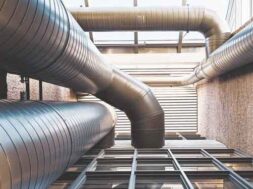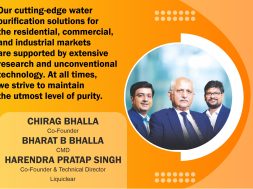IAQ audits are crucial for occupants’ safety and hygiene

This article highlights the automation trends visible in the HVAC industry.
Based on current market conditions, the HVACR industry is expected to increase between 2022 and 2027. With rising demand for technologies and systems in the HVAC business, the HVACR industry is predicted to grow at a CAGR of 5.1 percent.
Air quality and ventilation
On discussing about regular and periodic audits and indoor air quality testing Ashwin Bhadra CEO of Equinox Labs says “These audits are crucial for the occupants’ health and hygiene. The use of air purifiers is another measure of good air quality. Studies have proven that indoor air quality is poorer than the outdoors. As most of the population spends time in closed indoor spaces, an uncompromised approach must be taken towards maintaining good air quality and ventilation. Studies have proven that indoor air is ten times more polluted than outdoor air.” Prolonged exposure to poor indoor air quality has adverse health effects like eye, nose and throat infections, respiratory problems and even Cancer in the worst case. As much as 90 percent of us spend our time indoors.
The lab is following standard protocols
Being an FSSAI-notified and NABL accredited laboratory, Equinox Labs conduct in-house audits in their lab to ensure that they comply with the standards and guidelines recommended by all the regulating authority bodies.
Additionally, they follow good hygiene practices like wearing well-fitting layered masks and gloves, ensuring the cleanliness of surfaces and equipment, periodic sanitisation and disinfection drives and installation of safety and warning signages wherever required to create a safe working environment.

Automation trends visible in the HVAC industry Automated HVAC Systems:
These visibly improve efficiency. Incorporating thermal sensors in conjunction with information on building construction, design, airflow, and orientation dynamically modifies performance based on altering building conditions. The technology uses less energy than a traditional HVAC system to maintain the building at the specified temperature without human intervention.
Eco-Friendly HVACs: HVAC systems are ecologically friendly and use solar and wind power to cut down on energy expenditures.
“Smart” HVAC Technologies: Today’s HVAC designs are available with sensors that can “speak” to one another. For instance, occupancy sensors control interior lighting, humidity, and temperature.
Implementation of Data and Connectivity: Smart metres, thermostats, and sensors are increasingly being used to save energy expenses because many contractors and architects think “green” when they design. Owners of buildings influence not only the temperatures but also the humidity levels and airflow.
Ductless HVAC Systems: It is nearly tough to retrofit older buildings with air conditioning, especially if there needs to be more room to install ducting. These updates may be a bit expensive for clients in buildings with space. Ductless heating and cooling systems serve as a compromise on both ends. These little units can be set up almost anywhere without ductwork. Modern infrastructures with gaps and holes in ductwork are the ideal candidates for ductless HVAC systems as a fix. They can use ductless HVAC systems rather than pay for expensive replacements.
37
Cookie Consent
We use cookies to personalize your experience. By continuing to visit this website you agree to our Terms & Conditions, Privacy Policy and Cookie Policy.










